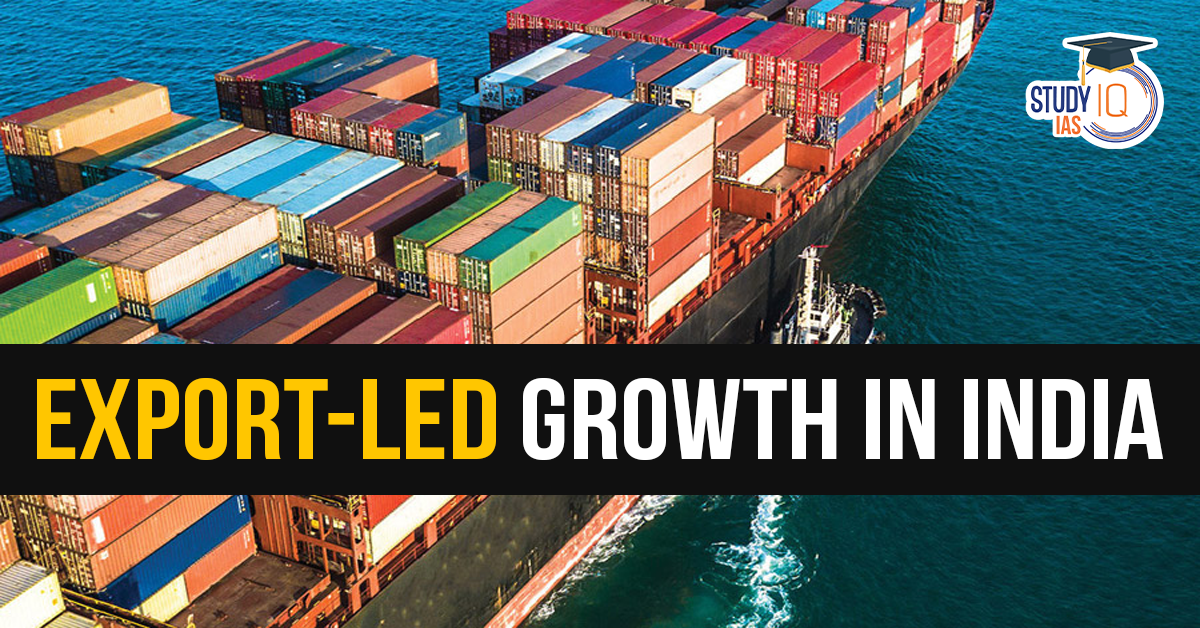Table of Contents
Context: In India consumption is subdued and private investment is weak. But exports could offer a way out.
More in News
- India’s GDP is roughly $4 trillion while global GDP is a little more than $100 trillion.
- That means that India’s share of the global economy is around 4%.
- But its share in global goods exports is much smaller, less than 2%.
Background of Slowdown in the Indian Economy
- Decline in GDP Growth Rate:
- India’s GDP growth has consistently declined in recent quarters, from over 8% in mid-2023 to less than 5.5% in September 2024.
- High-frequency indicators confirm a slowdown, reflecting weaker economic momentum beyond statistical anomalies.
- Subdued Consumption Demand:
- Urban consumption remains weak, dampening overall demand.
- This slowdown impacts private investment, as industries face excess capacity utilization and hesitate to expand.
- Weak Private Investment:
- Despite healthy corporate balance sheets, private investment remains short.
- Lack of demand for additional production capacity discourages new investments.
- Fiscal Constraints on Public Investment:
- Government spending has been a key driver of growth, but fiscal limits are nearing, restricting further expansion.
- Persistent reliance on government-led demand is unsustainable.
- Declining Foreign Direct Investment (FDI):
- FDI inflows stagnated at $66 billion in 2023-24, with only a small proportion directed toward manufacturing.
- Missed opportunities to capitalize on global supply chain shifts from China.
Why Export is a Way Out
- Potential Growth Through Exports
- A targeted increase in export share by 1 percentage point over five years could add 1% to annual GDP growth.
- A 50% increase in export volumes implies substantial economic benefits and job creation.
- Global Dynamics Favoring India
- Multinational corporations are shifting supply chains away from China, creating an opening for India.
- India’s demographic advantages and policy measures like the PLI scheme make it a strong contender for FDI.
- Manufacturing as a Catalyst
- Attracting FDI in manufacturing could increase India’s competitiveness in global markets.
- Export-oriented manufacturing has historically driven growth across Asia.
Policy Recommendations for Export-Led Growth
- Consistent Trade Policy:
- Minimize tariff changes and avoid import/export bans.
- Shift from protectionist policies to a free-trade mindset.
- Improved Exchange Rate Management: Allow exchange rates to reflect market dynamics to enhance export competitiveness.
- Enhanced Ease of Doing Business: Simplify regulatory frameworks to attract foreign and domestic investment.
- Boost FDI in Manufacturing:
- Expand and streamline schemes like PLI.
- Ensure infrastructure and skill development to support manufacturing growth.
- Transparent and Predictable Policies: Avoid policy flip-flops to instill confidence in investors and businesses.
- Level Playing Field: Equal opportunities for domestic and foreign firms to foster healthy competition.


 Out-of-Pocket Health Expenditure, Reason...
Out-of-Pocket Health Expenditure, Reason...
 Treasury Bills (T-bills): RBI Cuts Holdi...
Treasury Bills (T-bills): RBI Cuts Holdi...
 Fisheries Sector in India, Current Statu...
Fisheries Sector in India, Current Statu...

























